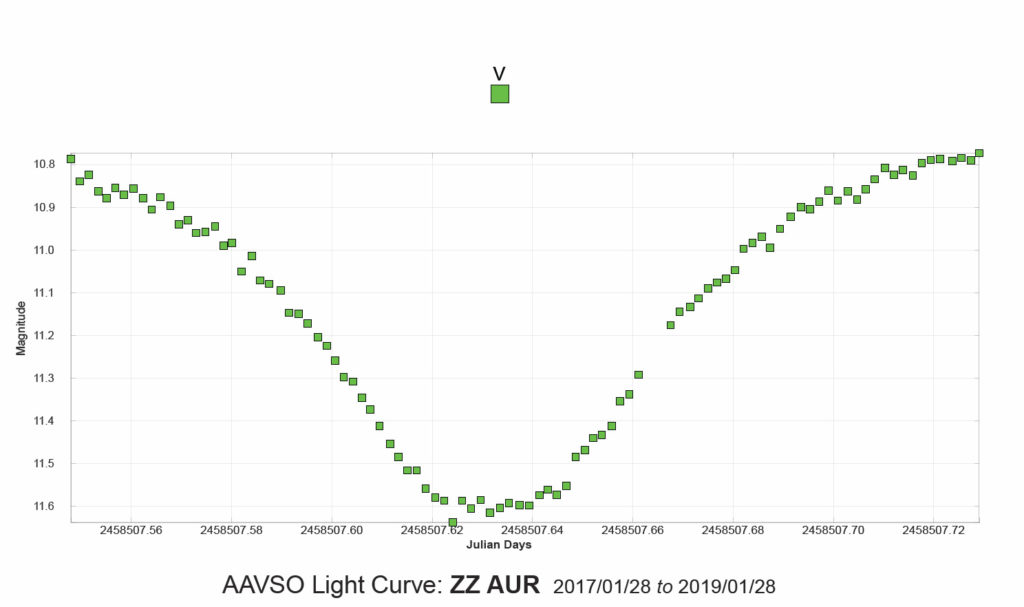
For the last 20 years or so I have been very interested in doing what is called Citizen Science. For me this entails measuring the brightness of variable stars and building what is called a light curve from that data. The light curve often shows what type of variable star you are observing. There are some examples of a light curve later on in this blog. My favorite targets are binary stars that are so close that their atmospheres touch and they revolve around each other in less than a day!
The American Association of Variable Star Observers has a database of variable stars called VSX. Some of the stars found on VSX have hundreds or thousands of observations over many years but the vast majority of stars have few or no observations. Many of the stars on VSX were found by professional or amateur surveys and have not been observed since. These little observed stars of close binary systems are what I enjoy the observing the most.
Each studied variable star in the VSX database should have a
AAVSO Unique Identifier or AUID. Many of the stars in the VSX system don’t even have an AUID assigned to them yet. This is the easiest way to find stars that need observation is to look and see if an AUID has been assigned. If not, any AAVSO member can ask for a number to be assigned.
Last week I had the opportunity to image ZZ Aur, a close binary with around a 14 hour period. One of the reasons these types of stars are fun to image is the fact that they actually show pronounced changes in the 6-7 hours that you observe them. Some stars called LPV or Long Period Variables can take more than a year to change and this means that there is little change in brightness from month to month. So close variables are pretty exciting!
The above image shows the light curve of ZZ Aur. There were 97 images taken over an approximate 6 hour period. Each green square represents one image of ZZ Aur.

The AR102, Sirius mount, ST-8E Camera and a laptop to control it all!
The equipment used to image ZZ Aur is pretty modest by most standards. The most important piece of equipment for imaging is the mount. A number of years ago I was able to purchase a used Orion Sirius mount for 450 dollars. I swapped out the tripod with 1.5″ tubular legs for a tripod with 2″ tubular legs. This probably increased the payload capacity from 30 to 35 pounds. The mount did not come with a Hand Control unit but it did come with a cable that enabled a computer to drive the mount. This is done with an EQDIRECT cable and EQASCOM software.
The telescope is a 102 mm (lens diameter) refractor. This telescope is an Explore Scientific brand called AR102. AR is short for a 2 lens doublet objective lens or an Achromat. When the scope was purchased several years ago it was around 300 hundred dollars on sale. The AR102 turns out to be just about perfect for imaging using a photometric filter. This is because the filter only passes a small wavelength of light which negates the effect of chromatic aberration or CA. CA is caused when the violet or blue light does not come to the same focus as the green and red light. Purple Haze is often seen around bright objects or stars in an achromat.
The camera is a 15 year old Santa Barbara Instrument Group (SBIG) ST-8E. This medium format camera uses an ultra slow parallel port cable to upload images. The average upload time is 67 seconds! This creates unique issues but then it is why the camera sells so cheap on the used market. It also has an effective cooling system that keeps the temperature steady. Keeping the CCD chip cold reduces the amount of noise or static in the image and this is important for getting accurate data in your images. I bought this camera used a little over a year ago for 250 dollars.
The SBIG ST-8E has a 5 filter wheel attached to it. The filters in it are photometric. These filters only pass a small wavelength of light in each color area. For example the g filter is equivalent to the green part of the spectrum. The r is red, the b blue and i infrared. With these Sloan photometric filters and the camera you can precisely measure the light of a variable star. The filters came with another camera that I got on another telescope I purchased.
One of the other pluses of this modest system is the wide field of view. In fact the area seen in one image is twice the size of the full moon which is huge in imaging terms. With this much field of view it allows for wide views that often include other variable stars in the same field. You also need stars with known magnitudes to compare the variables with. These are called comp stars. A wide FOV (field of view) makes finding suitable comp stars much easier as well.
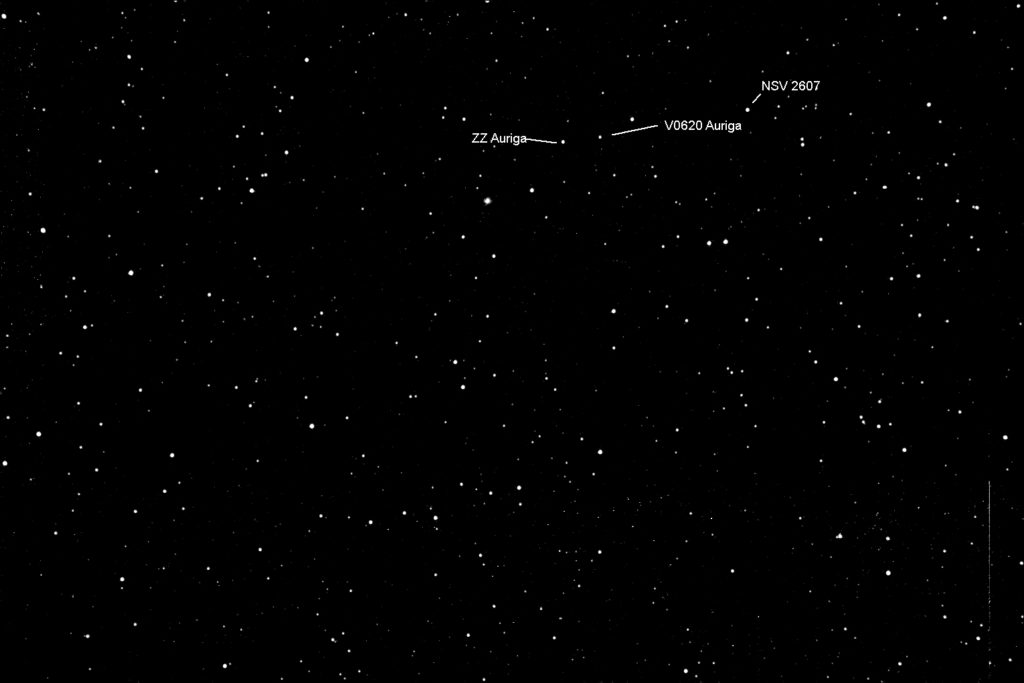
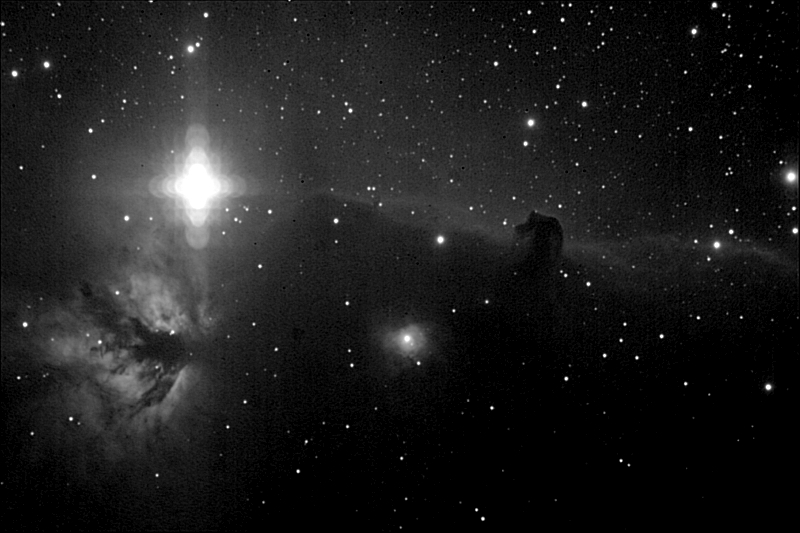
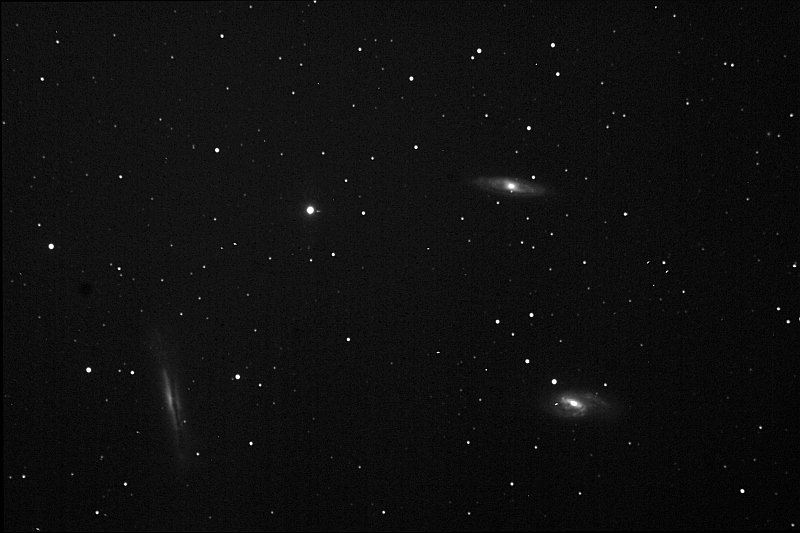
One of the pluses of a wide field is other variables in the field of view. Near ZZ Aur is a variable called V0620 Aur. Turns out this variable had never been imaged since the initial survey. It is a great feeling to see that your observations are the first ones done on a star! V0620 Aur is also a close binary with a similar period.
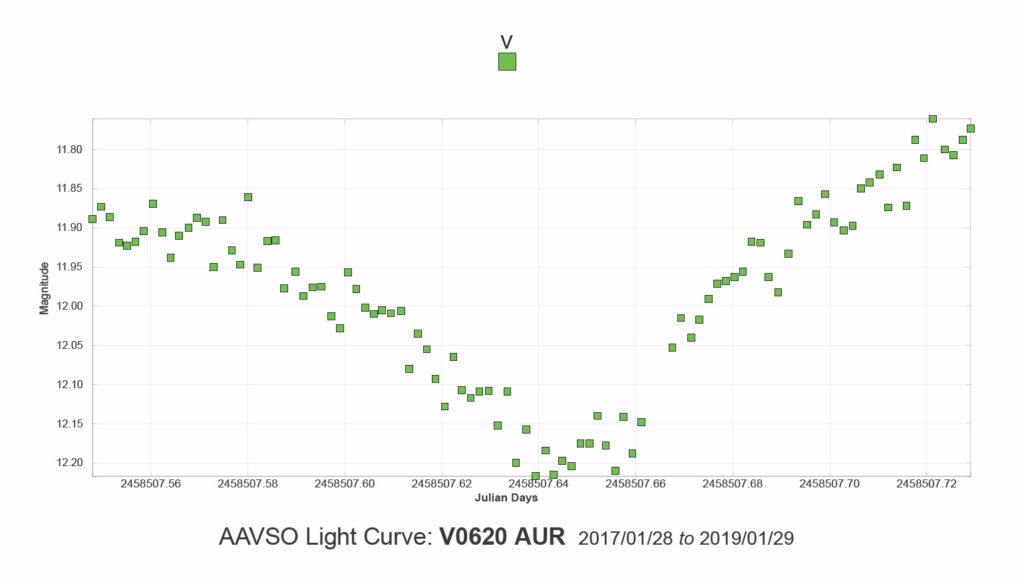
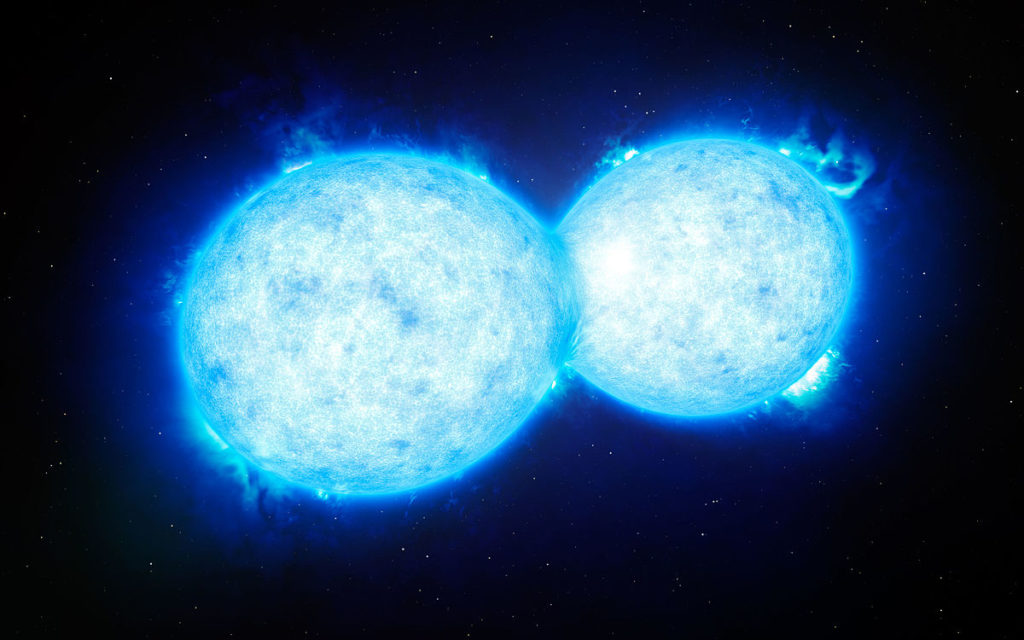
Overall with a modest investment of 1000 dollars over a several year period I am doing actual science! This is something I have wanted to do for many years but never thought would be possible for the poor amateur like me! If you have an interest, even if you don’t have binoculars or a telescope, you can still do science! So contact the AAVSO at https://aavso.org/
Links
AAVSO visual Observing Manual https://aavso.org/visual-observing-manual
AAVSO CCD Observing Manual https://www.aavso.org/ccd-photometry-guide?_ga=2.159144883.841966565.1548641857-1298051262.1543497864
All the AAVSO Manuals https://aavso.org/observing-manuals
Exo-Planet Observing book by Bruce Gary (Great resource) http://brucegary.net/book_EOA/EOA.pdf
